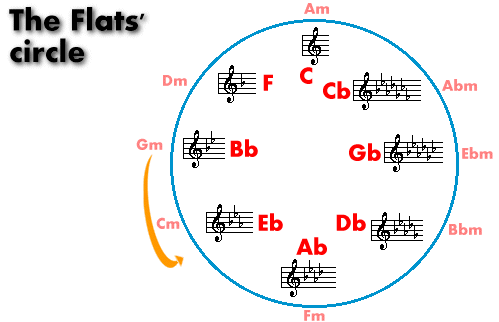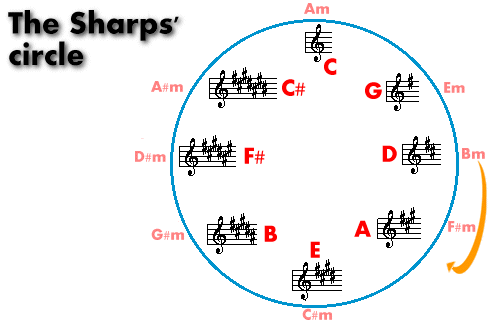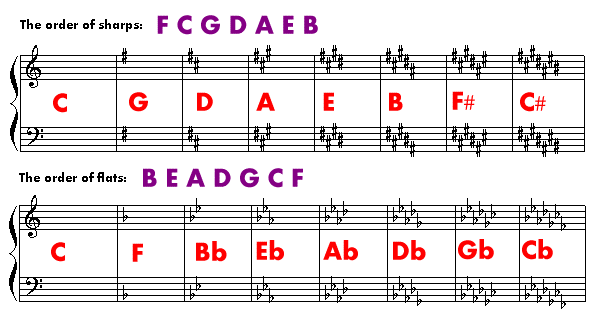
 













Circle of fifth
Since the intervals of a scale are always the
same (regardless of the note from which the scale starts from), we sometimes
will have to play chromatic notes, that is sharps or flats.
Sharps or flats would then appear
next to the clef, indicating that we are dealing with a scale that uses
chromatic notes, such as F sharp (F#) or B flat (Bb).


The circle of fifths allows us to know what the
key is by the number of signs, and vice-versa:
The flats' circle

How to tell a key from the number of flats
next to the clef ?
Check the order of flats: "B-E-A-D-G-C-F", and stop
at the number of flats that appears next to the clef,
minus one.
|
Example: If you see 4 flats beside the clef, look at the third one
(which is A flat) - that is the tonic of the major scale with these 4 flats
(at this example - A flat major).
|
 Try
to find which scales have got: Try
to find which scales have got:

The sharps' circle
How to tell a key from the number of sharps
next to the clef?
The last sharp is the leading tone. Add a semitone to it and
you have found the tonic of the scale.
|
If you get 3 sharps, for example, check with the sharps (the order
of sharps: "F-C-G-D-A-E-B") what is the last one (G sharp, in
this case), go up a semitone (G#--> A), and you have the tonic of the
major scale (at this example - A major).
|
 Try
to find which scales have got: Try
to find which scales have got:


Here are all the possibilities of sharps and flats next to the clef, and
the key to which they refer:




MusixCool© By
Nadav Dafni
|